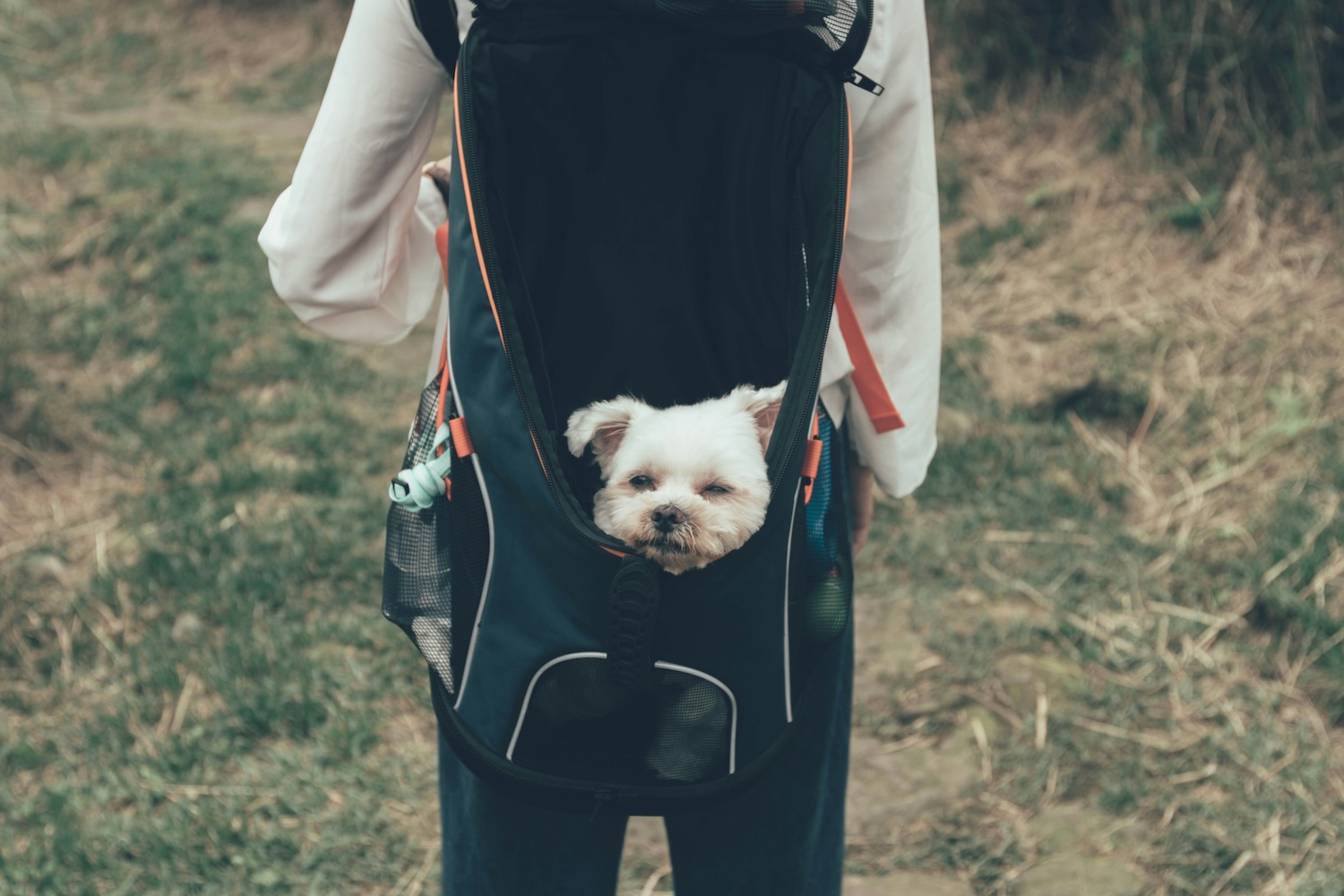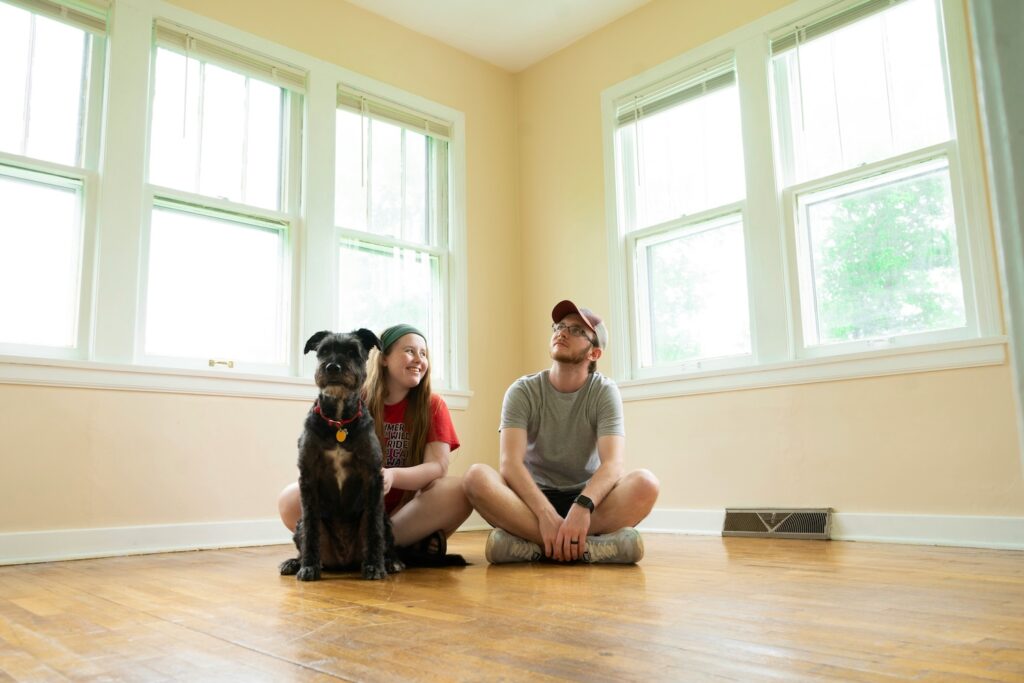Picture this: it’s 6 AM on a Saturday morning, and your dog is practically vibrating with excitement as you reach for their lead. They know adventure awaits. Fast-forward to Monday evening, and that same dog can barely lift their head from their bed when you suggest a walk around the block. By Thursday, they’re pacing the house, shredding tissues, and giving you those pointed looks that seem to say, “Remember when we used to do things?”
If this weekly cycle feels familiar, you’re witnessing something that goes deeper than simple tiredness. What looks like a reasonable compromise between busy weekdays and active weekends is actually creating a physiological and behavioural pattern that works against your dog’s wellbeing.
What You Might Be Noticing: The Two-State Problem
Many Australian dog owners find themselves caught in what I call the “boom and bust” cycle. You might notice that your dog seems to exist in two distinct states throughout the week, neither of which feels quite right.
During weekdays, you’re likely observing the gradual build-up of what looks like frustration. The restlessness that increases as the week progresses, the destructive chewing that appears out of nowhere, the excessive barking at every sound, the inability to settle in the evening. These aren’t signs of a badly behaved dog; they’re your dog’s attempts to create their own stimulation when their fundamental needs for physical exertion and mental engagement go unmet.
Come the weekend, you might see the pendulum swing to the opposite extreme. That frantic energy during Saturday’s beach trip, where your usually responsive dog seems unable to hear their name being called. The seemingly endless appetite for fetch that borders on obsessive. The way they appear almost manic in their pursuit of activity. What often looks like pure joy might actually be a dog in a state of over-arousal, where their nervous system is overwhelmed and their normal impulse control has disappeared.
Then there’s the aftermath. What many of us interpret as satisfying tiredness after a big weekend adventure might be something else entirely. The profound lethargy that extends well into Sunday evening, the reluctance to interact, the unusual grumpiness, or the way they seem almost sore when getting up from their bed. This could signal that your dog’s body is working overtime to recover from demands it wasn’t prepared to handle.
The Pattern I’ve Found: How Bodies Adapt to Exercise
What I’ve discovered through research is that fitness operates on what exercise physiologists call the overload principle: to improve physical capacity, the body must be challenged beyond its current capabilities. But here’s the crucial part that many of us miss – those adaptations only stick when the stimulus is consistent and progressive.
Think of your dog’s fitness like a bank account. During the week, they’re making withdrawals as muscle tone decreases, cardiovascular efficiency declines, and the strength of ligaments and tendons weakens. This process, called deconditioning, can begin after just two weeks of reduced activity, with flexibility decreasing even faster. By Friday, your dog has essentially returned to baseline fitness.
Then comes the weekend – except there’s nothing left in the account. That two-hour hike isn’t making a deposit into their fitness bank; it’s overdrawing an already depleted system. The body responds not with healthy adaptation but with micro-trauma in muscles and connective tissues, inflammation, and significantly elevated injury risk.
The five-day gap between weekend activities isn’t productive recovery time; it’s deconditioning time. What this means is that each weekend session isn’t performed by a body that’s stronger than the week before. Instead, your dog is repeatedly subjected to intense physical demands from what’s essentially a deconditioned state.
Research on sled dogs provides some fascinating insights here. When these dogs were put through incremental training, their voluntary activity levels dropped as exercise-induced fatigue accumulated. But after two consecutive rest days, their spontaneous movement increased significantly, with a notable spike on the second day. This suggests that the first rest day involves deep physiological recovery, while the second marks a return to baseline energy and readiness for activity.
For our weekend warrior dogs, this recovery timeline reveals a critical gap. If your dog remains unusually quiet and inactive well into the day after intense exercise, they’re likely still in significant recovery mode and aren’t ready for another demanding session.
What I’ve Observed: The Injury Risk Profile
The weekend warrior pattern creates what I think of as a perfect storm for injury. The most common casualties follow predictable patterns: soft tissue strains and sprains when muscles and tendons are suddenly stretched beyond their unconditioned capacity, damage to the bicipital tendon (crucial for shoulder and elbow function), and the dreaded cranial cruciate ligament rupture when an unprepared knee joint experiences sudden rotational forces during activities like fetch.
Some dogs face amplified risks. Puppies with developing growth plates are particularly vulnerable – the “five-minute rule” (five minutes of structured exercise per month of age, twice daily) exists for good reason, as excessive exercise can cause permanent deformities. Senior dogs and overweight dogs both face magnified forces on already compromised joints, where a sudden weekend burst can trigger severe arthritis flares or catastrophic ligament failures. Flat-faced breeds can quickly progress from exertion to life-threatening respiratory distress.
One area that’s often overlooked is paw pad conditioning. Pads require gradual exposure to build tolerance for different surfaces. A dog that spends the week on soft indoor surfaces then suddenly runs for an hour on rough pavement faces significant risk of painful abrasions and tears.
The Hidden Stress You Can’t See
Here’s what makes the pattern even more concerning: the impact extends far beyond sore muscles. When researchers studied dogs at off-leash parks, they discovered something surprising. A 20-minute visit caused a significant spike in salivary cortisol – the primary stress hormone – compared to an on-leash walk of the same duration. This wasn’t from physical exertion; it was from the complex social dynamics and high-arousal environment.
This cortisol response changes everything about recovery. While muscle soreness might resolve in 24-48 hours, cortisol can remain elevated for days. During this time, your dog exists in a state of physiological stress, even if they appear calm on the surface. You might notice their sleep becomes restless – shifting positions frequently, unable to settle deeply. This disrupted sleep prevents the crucial restoration processes that happen during deep rest, creating a cycle where incomplete recovery leads to greater susceptibility to stress and injury.
The week of under-stimulation creates what researchers have identified as a deficit in mood-regulating neurochemicals like serotonin and dopamine, which are naturally produced during exercise and enrichment. The weekend then delivers a potentially dysregulating flood of stress hormones alongside endorphins, followed by an abrupt crash on Monday as activity levels plummet again.
You might notice this as a dog who struggles to find emotional equilibrium. Instead of having a stable baseline, they’re constantly trying to recover from the previous extreme while their body anticipates the next one.
Learning to Read Recovery Signals
Recovery is an active, observable process that extends far beyond “sleeping it off.” After intense exercise, veterinary sports medicine specialists suggest 36-48 hours for full recovery. Even brief bursts of maximal effort require substantial recovery time – what experts call a 10:1 rest ratio.
You want to see a dog who settles easily for sleep and sleeps soundly, maintains normal appetite and eating posture, returns to baseline energy by the next morning, and moves fluidly after their initial wake-up stretch.
Watch for warning signs that suggest incomplete recovery: restless sleep with frequent position changes, stiffness persisting beyond the first few steps, reluctance to bend for the food bowl, mood changes like irritability or withdrawal, and any shortened stride or asymmetric movement.
The subtlest but often earliest indicator is sleep quality. Dogs experiencing muscle soreness struggle to achieve deep rest. This disrupted sleep appears before obvious signs like limping, giving you an early warning that the previous day’s activity was excessive.
Building Something Better: A Practical Transition
The solution isn’t finding more hours in your day or completely overhauling your routine. What I’ve discovered is that you can bridge the conditioning gap with surprisingly minimal time investment during the week.
Research suggests that as little as 10 minutes of appropriate activity, performed two to three times during the work week, can maintain the physiological adaptations needed for more robust weekend activities. These “exercise snacks” aren’t designed to exhaust your dog but to keep their muscles, tendons, and joints conditioned.
If you’re genuinely pressed for time, focus on this minimum viable approach: 10 minutes of high-value activity, twice during the work week. This could be backyard fetch before work, lunchtime “find it” games with their meal, evening tug-of-war sessions, or apartment hallway training for those without immediate outdoor access.
The crucial change alongside this is significantly reducing weekend intensity initially. This is where most people struggle, but it’s essential. Consider cutting your typical weekend activity by 40-50% while you build weekday consistency. Yes, your dog might seem unsatisfied initially, but you’re preventing injury while building toward sustainable fitness.
Once you’ve established that weekday rhythm for a few weeks, you can gradually build both weekday sessions (adding 1-2 minutes weekly) and weekend activities (increasing by 10-15 minutes weekly). The key principle is that weekend outings shouldn’t exceed 2-3 times your longest weekday session.
The Power of Mental Exercise
Here’s where I think busy dog owners can really leverage their time effectively: mental exertion creates genuine fatigue through different mechanisms than physical exercise. It’s not about calories burned but about neurological load from processing, learning, and problem-solving.
The “sniff walk” exemplifies efficient enrichment. Twenty minutes of thorough environmental investigation provides satisfaction that meets behavioural needs in ways that pure physical exercise doesn’t always achieve. When you allow your dog to stop, investigate, and process the olfactory information in their environment, you’re providing immense mental stimulation.
Research using cognitive bias testing shows that dogs participating in nose work develop more optimistic outlooks, approaching ambiguous situations with positive expectations rather than anxiety or fear.
You can create powerful enrichment with everyday items. Feeding meals from puzzle toys instead of bowls transforms a 30-second meal into a 15-minute problem-solving session. Hiding treats around a room for “find it” games, or simply rolling treats in an old towel, creates mentally taxing scent work that can be set up in seconds.
Short training sessions provide another time-efficient approach. Five minutes of trick training requires intense focus from your dog and can be easily integrated into daily routines – practising “stay” while you make coffee or working on “down” during television ads.
Managing Social Exercise and Its Costs
Dog parks aren’t just physical exercise – they’re physiological stressors. That documented cortisol spike from a 20-minute visit means your dog needs what specialists call a “cortisol vacation” – 24-72 hours of low-arousal recovery.
You might notice green lights for social play: loose, bouncy body movements, play bows and voluntary breaks, role reversals in chase games, and periodically returning to check in with you. Red flags requiring intervention include hunched posture (correlated with higher cortisol), excessive lip licking or yawning, trying to hide or leave, or either bullying others or being repeatedly targeted.
After high-arousal social play, consider providing quiet recovery time. This might mean avoiding training classes, visitors, or other stressors for at least 24 hours.
Working With Australian Realities
When temperatures exceed 28°C, the safest approach often shifts entirely to indoor mental enrichment. The seven-second pavement test remains non-negotiable – if you can’t hold your hand on the surface for seven seconds, it’s too hot for paws.
During hot periods, you might focus on pre-dawn sessions (before 6 AM in summer), indoor training and enrichment, swimming if available, or evening sessions after 8 PM. Sometimes the safest exercise is no exercise, replaced entirely with air-conditioned mental challenges.
Different breeds have genuinely different needs once properly conditioned. Working breeds like Border Collies or Kelpies may need 1-2 hours daily, but the key is building to this gradually while incorporating mental challenges. Companion breeds like Cavaliers or Pugs are often satisfied with 20-30 minutes of gentle activity plus mental enrichment. Giant breeds benefit from short, frequent sessions rather than long outings, even after maturity.
A Weekly Framework That Actually Works
Consider this adaptable approach: Monday might begin with a 20-minute sniff walk for active recovery, paired with feeding breakfast from a puzzle toy. Tuesday and Thursday could incorporate those 10-minute conditioning sessions alongside regular walks. Wednesday and Friday might emphasise mental enrichment through scent games and training. Weekend sessions can then be more intensive, knowing your dog’s body has maintained baseline conditioning throughout the week.
For shift workers or those with genuinely minimal weekday time, focus entirely on consistency over duration. Five minutes daily beats sporadic longer sessions. Use weekends for moderate (not extreme) activity, and invest in puzzle feeders and enrichment toys for independent mental exercise.
The Deeper Shift
The weekend warrior pattern reflects modern life’s incompatibility with canine biology. Breaking free requires accepting that ten minutes of daily engagement beats two hours of weekend exhaustion, that a dog contentedly working a puzzle is more fulfilled than one collapsed from forced exercise, and that mental tiredness creates genuine satisfaction.
Watch your dog on Tuesday morning after a month of consistent, balanced exercise. They’ll rise easily, move fluidly, greet the day with calm enthusiasm rather than manic energy or exhausted reluctance. No stiffness, no restlessness, no behavioural extremes.
This is what sustainable fitness looks like – not a depleted dog, but a resilient one. The pattern that works with your life rather than against it. Your dog doesn’t need you to be perfect. They need you to be consistent, even if that consistency is just ten minutes a day. Start there. Build slowly. Let progress be gradual and sustainable rather than dramatic and potentially damaging.
The goal isn’t perfection; it’s progress toward a more systematic approach that honours your dog’s biological needs within the constraints of modern life. This shift from weekend overcompensation to weekday consistency creates the foundation for a deeper, more trusting relationship built on understanding rather than endurance.



